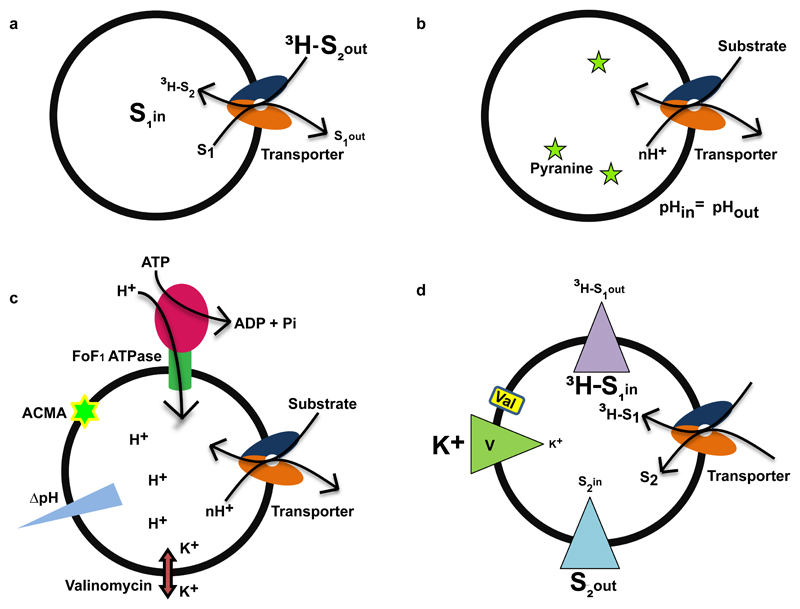Figure 4.
Modes of proteoliposome based transport assays. a, Substrate trapping method used for an antiporter. The unlabelled substrate (S1) is trapped inside the liposome and the radiolabeled substrate (3H-S2) is added externally. The accumulation of radioactive material inside the vesicle is measured. b, Uniform pH is maintained across the membrane, transport of substrate added from outside causes alteration in pH inside the vesicle and detected using altered pyranine fluorescence. c, F1F0 ATPase co-reconstitution based approach is used for proton driven antiporters. Addition of ATP in presence of ATPase creates the required pH gradient needed for transport of the substrate. The change in proton concentration due to active transport process is detected by pH sensitive dye ACMA (9-amino 6-chloro 2-methoxyacridine). Valinomycin in presence of potassium ion helps to keep membrane potential constant. d, Measurement of reversal potential of the membrane at equilibrium is used for electrogenic transporters; radiolabelled substrate (3H-S1) is trapped in high concentration inside the liposome and unlabelled substrate is added in high concentration outside (S2). The transport process is initiated by creating different potentials across the membrane using valinomycin in presence of potassium ions. The alteration of radioactive material is measured along with the reversal potential of the membrane.

